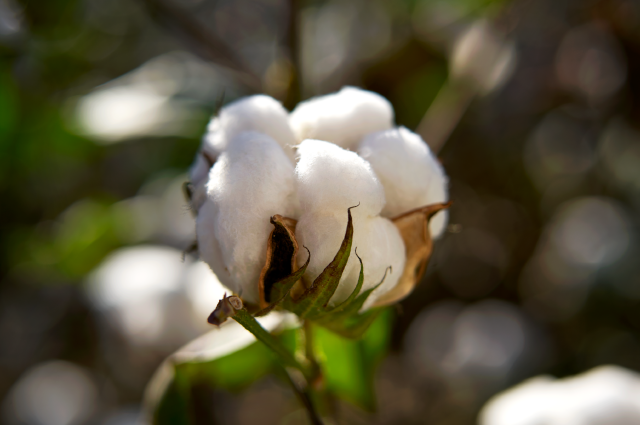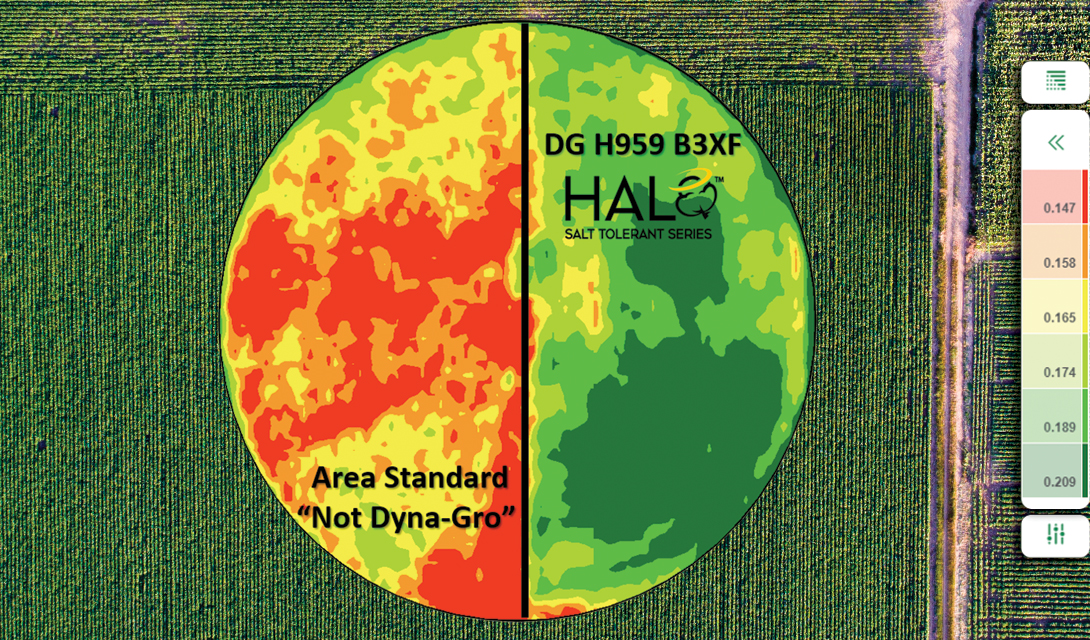Dyna-Gro Seed is proud to announce the launch of its brand-new HALO SALT TOLERANT SERIES™ cotton.

Why HALO? Halo is short for halophyte – a plant that grows in water or soil with high salinity. Salt tolerance includes:
- the ability of the plant to exclude the uptake of salts from a saline soil-water solution
- the ability of the plant to extrude or compartmentalize salts from a saline soil-water solution
- the ability of the plant to uptake water in an unfavorable saline soil environment
- the ability to produce a favorable yield under high saline water and/or soil conditions
Typically, salt tolerance is seen in the first 7-21 days with vigorous germination followed by good seedling growth rate in soils that are high in salt content. Cotton is most sensitive to salt environments from germination through the first six weeks. HALO SALT TOLERANT SERIESTM cotton achieves more uniform stands with vigorous root and seedling growth as well as better canopy cover versus salt sensitive lines.
This series will be utilized in a large geographic area: New Mexico, West Texas, Oklahoma, North Carolina, Louisiana and other areas where salty environments have impacted plant growth. According to Shawn Carter, Dyna-Gro Seed’s South Plains Division Agronomist, “This is just the beginning of the HALO technology usage and impact on the industry. It’s another example of Dyna-Gro Seed solving problems for its growers.” Carter mentioned that yield increases of 25% were seen during the testing of the HALO SALT TOLERANT SERIESTM in salt environments.
Dyna-Gro Seed, a Nutrien Ag Solutions brand, has a 20-year history of delivering quality seed with industry-leading performance. Marketing eight crops in 44 states, Dyna-Gro is focused on local success with regional seed solutions and retailers. With a broad selection and cutting-edge science, Dyna-Gro has become one of the top 10 seed companies in the United States.


